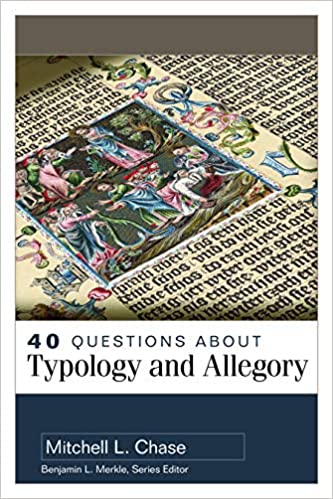A Brief Book Summary from Books At a Glance
by Mark Baker
About the Author
Mitchell Chase (PhD, The Southern Baptist Theological Seminary) is the preaching pastor at Kosmosdale Baptist Church and adjunct professor at Boyce College and Southern Seminary. He has also written Daniel in the ESV Expository Commentary series and The Gospel is for Christians.
Overview
Typology is growing in popularity in some theological circles. We rejoice that Jesus is the true and better Adam, the true and better David. This much the New Testament authors make clear. But what about typological connections that the New Testament does not mention? Are we free to make those typological connections ourselves, or can the apostles interpret Scripture in ways that we should not? Furthermore, what about allegory? Is it ever appropriate to employ allegorical interpretation on the Bible? This book seeks to answer these questions and more in its treatment of typology and allegory.
Table of Contents
Part 1: The Bible’s Big Story
- What Story is the Bible Telling?
- How Does the Bible Tell Its Story?
Part 2: Questioning Typology
Section A: Understanding Typology
- What is Typology?
- What Are the Theological Assumptions of Typology?
- Should we Identify Types the New Testament does not Identify?
- Do all Types Lead to Christ?
- Are Types only Recognizable in Hindsight?
- Are All Types Historical?
- Is Typology the Result of Exegesis or Something Else?
Section B: Typology in Church History
- How Was Typology Practiced in the Early Church?
- How Was Typology Practiced in the Middle Ages?
- How Was Typology Practiced in the Early Modern Era?
- How Was Typology Practiced in the Enlightenment?
- How Was Typology Practiced in the Late Modern Era?
- How Was Typology Practiced in the Postmodern Era?
Section C: Identifying Types
- How Do We Identify Types?
- What Types are in Genesis?
- What Types are in Exodus?
- What Types are in Leviticus through Deuteronomy?
- What Types are in Joshua through Ruth?
- What Types are in 1 Samuel through 2 Chronicles?
- What Types are in Ezra through Esther?
- What Types are in Job through Song of Solomon?
- What Types are in Isaiah through Malachi?
Part 3: Questioning Allegory
Section A: Understanding Allegory
- What is Allegory and Allegorical Interpretation?
- What are the Theological Assumptions of Allegory?
Section B: Allegory in Church History
- How Was Allegory Practiced in the Early Church?
- How Was Allegory Practiced in the Middle Ages?
- How Was Allegory Practiced in the Early Modern Era?
- How Was Allegory Practiced in the Enlightenment?
- How Was Allegory Practiced in the Late Modern Era?
- How Was Allegory Practiced in the Postmodern Era?
Section C: Identifying Allegories
- How Should we Practice Allegorical Interpretation?
- Are There Allegories in Genesis through Deuteronomy?
- Are There Allegories in Joshua through Esther?
- Are There Allegories in Job through Song of Solomon?
- Are There Allegories in Isaiah through Malachi?
- Are There Allegories in Matthew through Acts?
- Are There Allegories in Romans through Revelation?
Part 4: Reflecting on Typology and Allegory
- Why Should Interpreters Care about Typology and Allegory?
Summary
PART 1: THE BIBLE’S BIG STORY
The Bible tells a grand story. It begins with God’s creation of the world, and especially his creation of Adam and Eve. They were to rule and to reign in the garden. But when they fell, sin entered into the world, and they were condemned to death. But the story wasn’t over. In Genesis 3:15, God promised that he would send a redeemer—someone who would crush the head of the evil serpent and bring things right once again. The Old Testament is full of expectation for his serpent-crushing redeemer. Is it Seth? No. Is it Isaac? No. Is it David? No. Finally, Jesus is born, and he delivers a death-blow to Satan through his death and resurrection. The New Testament often alludes to this expectation of a redeemer, and it does so through quotations, allusions, and echoes. That’s what this book is about: it looks at the literary devices that the Bible uses to point to Jesus. . . .
[To continue reading this summary, please see below....]The remainder of this article is premium content. Become a member to continue reading.
Already have an account? Sign In
